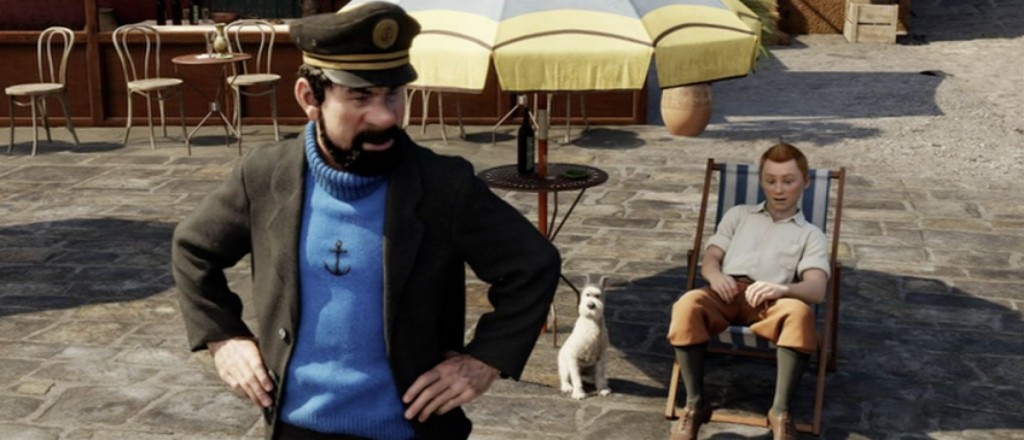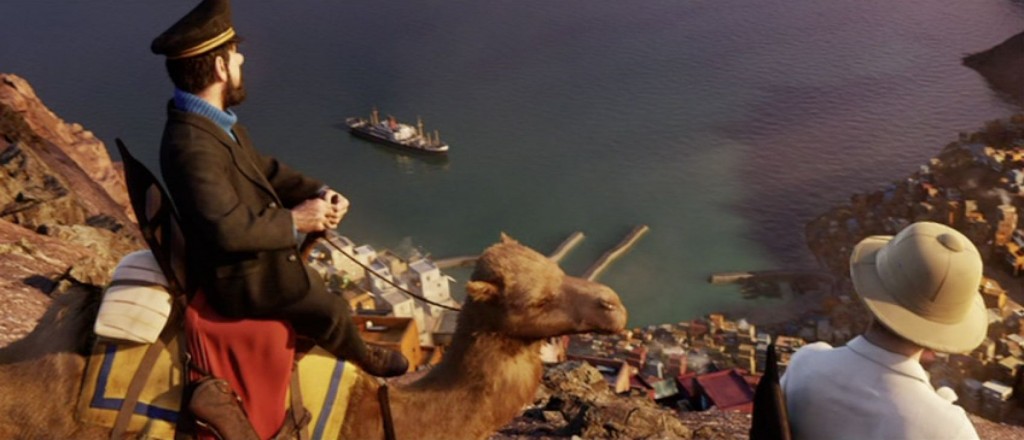Spielberg: The Adventures of Tintin part 8
Tintin and Haddock are at an impasse. Tintin has lost the scrolls and his story, which means, to him, his identity — he is his story. Haddock has lost his ship — again — and thus his connection to his family. Tintin, despondent, is ready to give up, but Haddock bucks him up with what he intends to be a big inspirational speech on the nature of failure. Haddock succeeds, but not in the way he intended — instead, his truncated inspirational speech gives Tintin a practical idea, to track Sakharine by radio. Spielberg builds up a sentimental moment, then sweeps away the sentiment with a nuts-and-bolts answer — Tintin is not about introspection but action.
Spielberg: The Adventures of Tintin part 7
Tintin and Haddock journey by camel to Bagghar, getting there just ahead of Sakharine in the Karaboudjan. Where are we now, in the structure of The Adventures of Tintin? Good question. Timing-wise, the grand transition from Tintin and Haddock in the legionnaire’s camp to them arriving in Bagghar falls at 1:12:00, with 34 minutes left to go in the movie. Given an assumption of acts of equal length, that would make the move to Bagghar a natural move into Act III. But don’t forget, act breaks are not about location or transition, but about the journey of the protagonist. In Act I, Tintin became embroiled in a mystery that led him to be taken aboard the Karaboudjan, an irreversible direction, led to by a choice but not a choice in and of itself (although Tintin would have surely tried to sneak onto the Karaboudjan on his own, given the opportunity). Act II is then divided into three parts, typical of Spielberg: meeting Haddock, travelling with Haddock, and acting with Haddock. The entrance into Bagghar is only the beginning of that third chapter of Act II. And, as we’ll see, the traditional end-of-Act-II low point, where the protagonist has lost everything “but there was one thing he’d forgotten,” comes with a mere 14 minutes left in narrative. All of Tintin is brisk, but that’s super brisk for Spielberg. And yet, it’s not necessarily brisk for animation — many classics, for whatever reason, dating back to Snow White and the Seven Dwarfs, follow what Jeffrey Katzenberg once explained to me as a “10-10-4” structure: 10 beats in Act I, 10 beats to Act II, 4 beats to Act III, Act III being, as Katzenberg described it, “a race to the finish line.”

